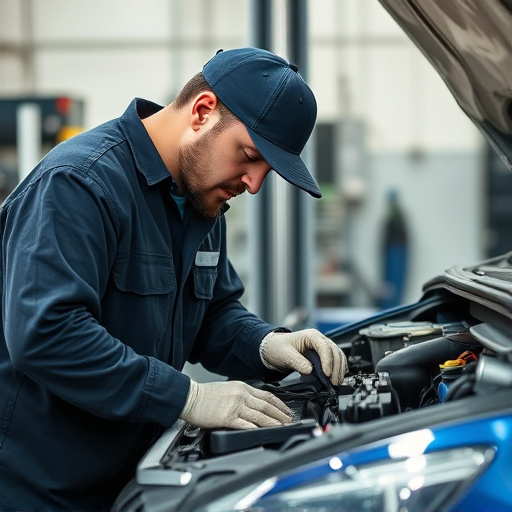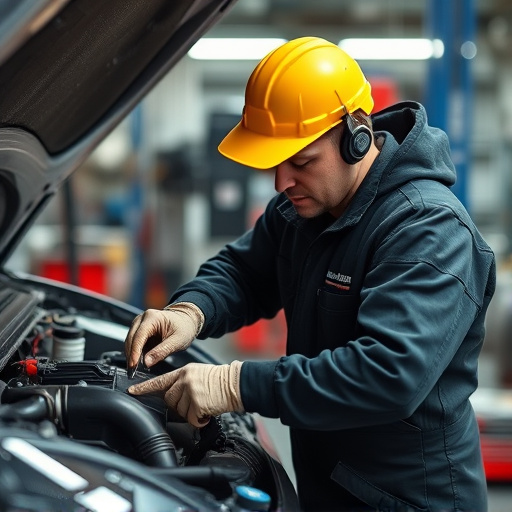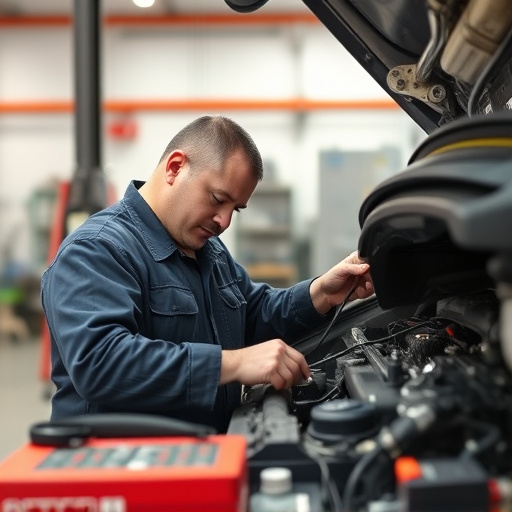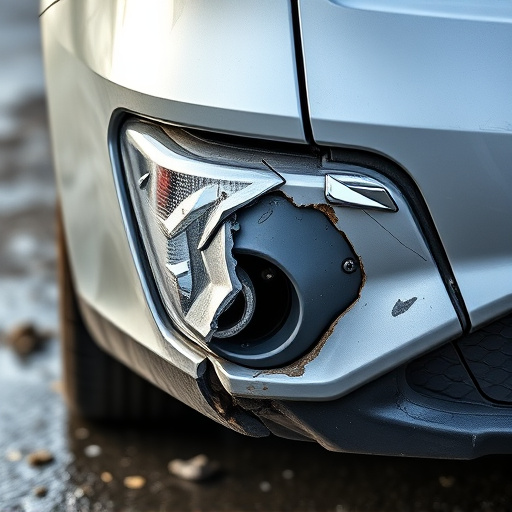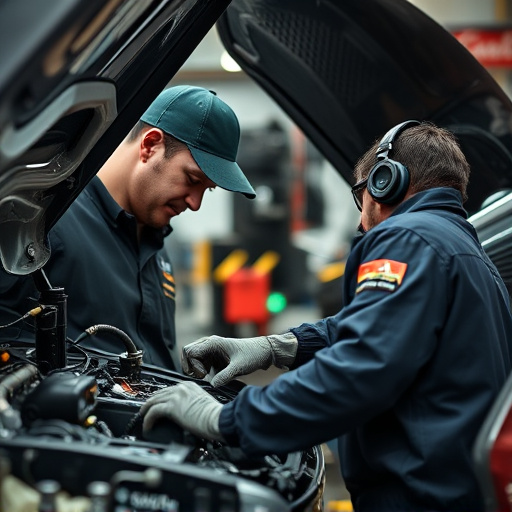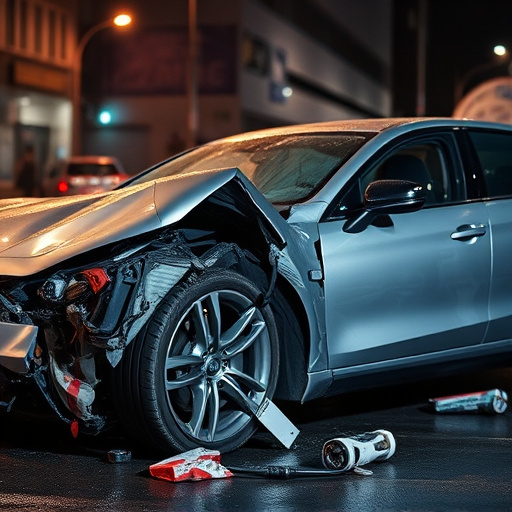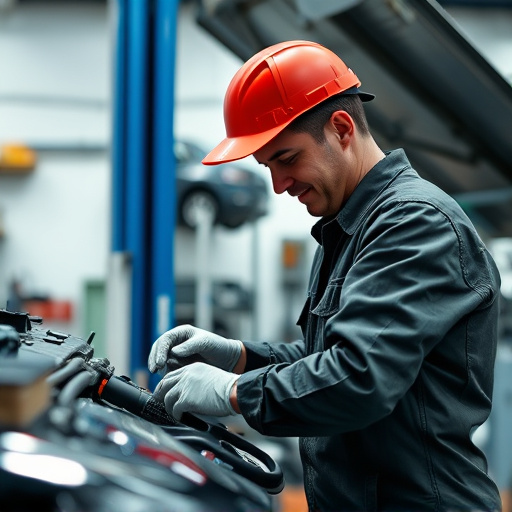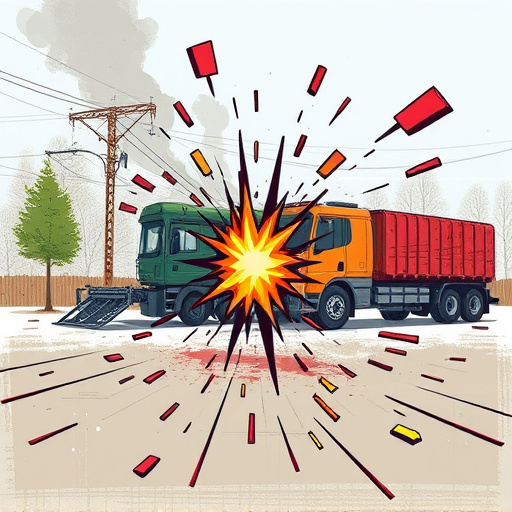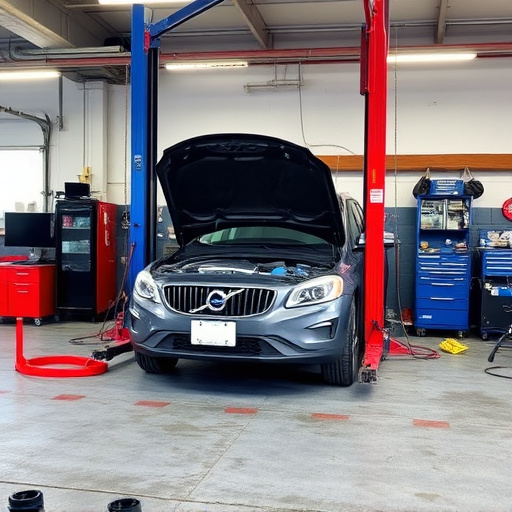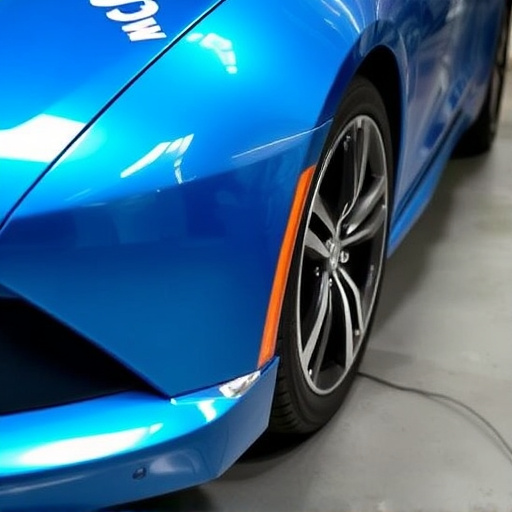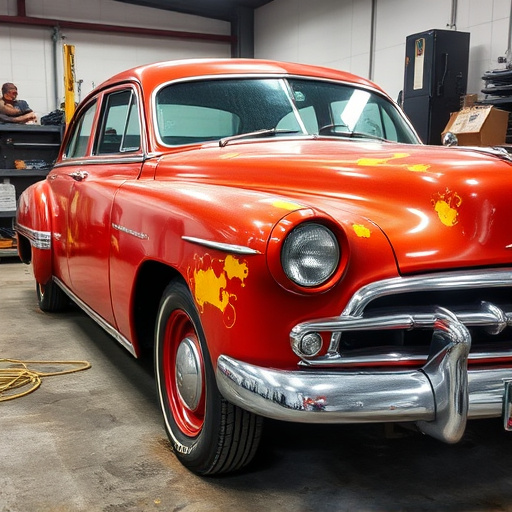Model X crash repair is a specialized process requiring meticulous attention to detail, advanced equipment, and skilled technicians. It begins with a comprehensive inspection, including body panel replacement, frame straightening, and recalibration of electronic systems. Optimizing shop workflows through streamlined processes, advanced technologies, and collaborative teamwork enhances efficiency and minimizes downtime. Technology integration using CAD software, robotic welding systems, and digital documentation improves performance, accuracy, and speed in Model X crash repair services.
Model X crash repair is a specialized field within the automotive industry, demanding precision and efficiency. This article delves into the intricacies of repairing these unique vehicles, focusing on process optimization and operational excellence. We explore the key components of Model X crash repair, offering insights to enhance shop workflow and overall performance. Additionally, we discuss the role of technology integration in revolutionizing crash repair practices for improved speed, accuracy, and cost-effectiveness.
- Understanding Model X Crash Repair: The Process and Key Components
- Optimizing Shop Workflow for Efficient Model X Crash Repair Operations
- Technology Integration: Enhancing Model X Crash Repair and Shop Performance
Understanding Model X Crash Repair: The Process and Key Components
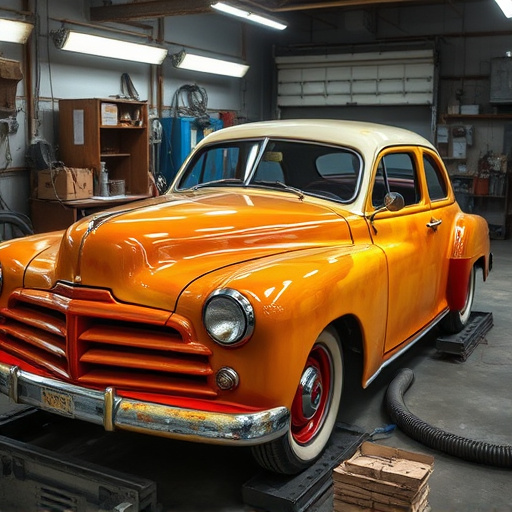
Model X crash repair involves a meticulous process designed to restore this advanced electric vehicle to its pre-accident condition. It begins with a thorough inspection to assess damage, which can range from minor fender benders to more complex structural issues. Skilled technicians then employ specialized equipment and techniques tailored for electric vehicles, ensuring precise repairs without compromising the vehicle’s unique systems and technology.
Key components of Model X crash repair include body panel replacement, frame straightening, and advanced electronic system recalibration. Auto collision centers equipped with experienced professionals and state-of-the-art facilities are crucial in handling these repairs efficiently. From precision fender repair to comprehensive structural restoration, the goal is to return the vehicle to its original performance and safety standards, making it an essential service for any automotive body shop specializing in electric vehicles.
Optimizing Shop Workflow for Efficient Model X Crash Repair Operations
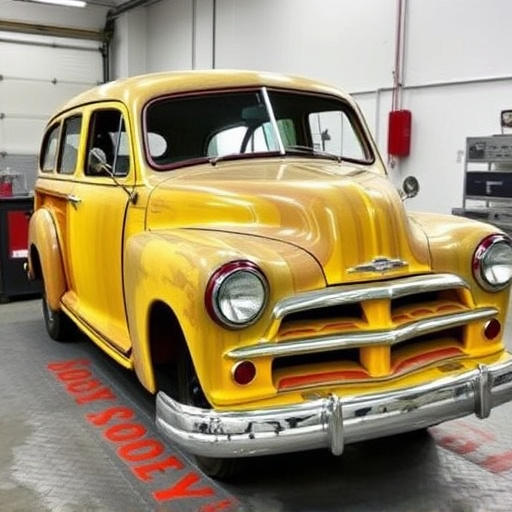
Optimizing Shop Workflow for Efficient Model X Crash Repair Operations involves streamlining processes to minimize downtime and maximize productivity. An efficient auto body shop equipped with specialized tools and trained technicians can significantly enhance Model X crash repair services. Implementing structured protocols, such as a clear sequence of repair stages, ensures that each task is performed methodically, reducing errors and saving time.
By integrating advanced technologies like computer-aided design (CAD) software and robotic welding systems, auto body shops can achieve higher precision in panel alignment and structural integrity during Model X crash repairs. Additionally, prioritizing communication and collaboration among team members, especially between estimators and technicians, facilitates a smoother workflow, ensuring that auto dent repair and auto repair services are executed promptly and accurately.
Technology Integration: Enhancing Model X Crash Repair and Shop Performance

In the realm of Model X crash repair, technology integration plays a pivotal role in enhancing both the efficiency and performance of automotive body shops. Modern digital tools enable precise measurements and real-time data sharing, ensuring that repairs are not just structural but also aesthetically perfect. Advanced car paint services, for instance, utilize computer-aided design (CAD) systems to achieve exact color matching, eliminating the guesswork and human error that can mar traditional painting techniques.
These technological advancements streamline vehicle repair processes significantly. Automated systems reduce the time spent on manual tasks, allowing mechanics to focus more on complex repairs. Moreover, digital documentation and inventory management systems improve operational efficiency by providing instant access to parts catalogs and reducing errors in ordering and tracking components, ultimately leading to faster turnaround times for Model X crash repair services within the automotive body shop.
In conclusion, optimizing Model X crash repair processes involves a combination of understanding complex repair procedures, streamlining shop workflows, and integrating innovative technologies. By implementing these strategies, automotive shops can enhance operational efficiency, reduce repair times, and ultimately provide superior service for Model X owners. Embracing digital advancements and refining traditional practices ensures that crash repair operations remain at the forefront of the industry.

